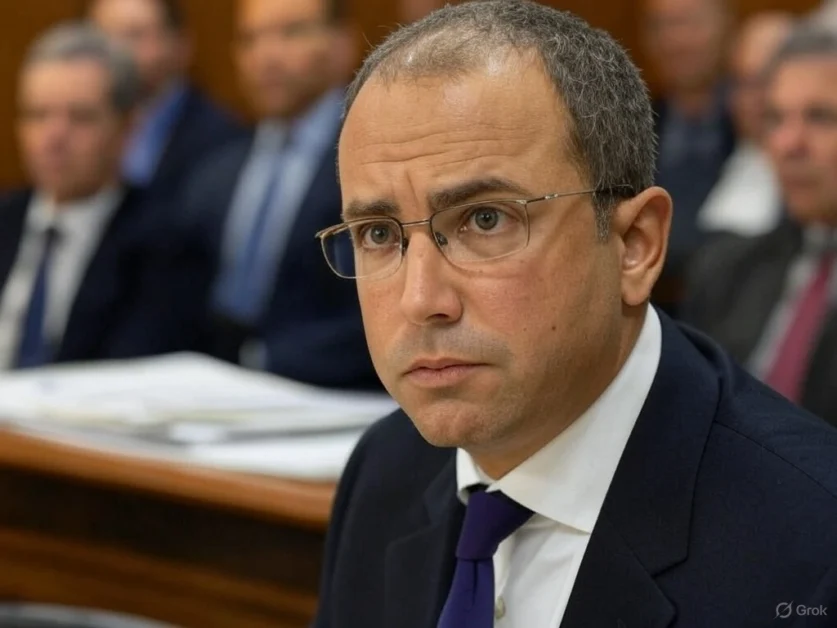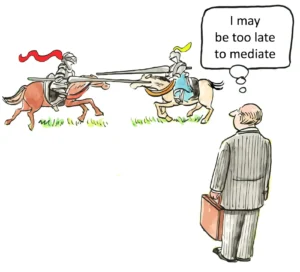Seattle Hospital Discrimination Trial: Ex-Clinic Head Alleges Racial Bias
The recent racial discrimination lawsuit against Seattle Children’s Hospital has culminated in a landmark $21 million verdict for Dr. Benjamin Danielson, highlighting significant concerns about systemic racism within healthcare institutions. The December 2024 jury decision found that the hospital created a hostile work environment based on race against Dr. Danielson, who served as medical director of the hospital’s Odessa Brown Children’s Clinic for over two decades. This case represents one of the largest workplace discrimination verdicts in recent history and raises important questions about institutional responsibility for addressing racial bias in healthcare settings.
Dr. Danielson, a Black physician who resigned from his position in November 2020, alleged that Seattle Children’s Hospital permitted racial slurs, failed to address known incidents of systemic racism, fostered an environment that maintained racial inequity, and subjected Black and Brown employees to different standards of conduct than their white counterparts. The jury’s substantial award signals their agreement with these serious allegations and may establish precedent for similar cases nationwide as healthcare institutions face increasing scrutiny regarding their handling of diversity, equity, and inclusion issues.
Background of the Seattle Children’s Hospital Case
The origins of this workplace discrimination case trace back to Dr. Danielson’s resignation in November 2020, which sent shockwaves through the Seattle medical community. As the longtime medical director of the Odessa Brown Children’s Clinic, Danielson had established himself as a respected pediatrician and passionate advocate for healthcare equity, particularly for marginalized communities. The clinic, founded over 50 years ago and named after a prominent community organizer who highlighted disparate treatment of Black patients, primarily serves families of color and low-income populations in the Seattle area.
Dr. Danielson’s departure triggered immediate public concern and prompted Seattle Children’s Hospital to commission an independent investigation into his allegations. This investigation, conducted by former U.S. Attorney General Eric Holder’s law firm, Covington & Burling, ultimately confirmed many of Danielson’s claims. Their report found that “racial disparities persist in leadership positions, promotions, and voluntary terminations” at Seattle Children’s and that the hospital’s “culture of conflict avoidance and failure to address microaggressions, combined with widespread distrust in the Human Resources function, contributes to an environment that excludes and undervalues BIPOC workforce members.”
Following the investigation, Seattle Children’s released a 21-page anti-racism plan in September 2021, but Dr. Danielson proceeded with legal action in October 2023, alleging that the hospital’s response was insufficient to address the deep-seated issues he had experienced and witnessed. His lawsuit specifically cited systemic racial discrimination, including failure to address biased security practices against patients of color and the use of racist terminology to refer to him years earlier. These allegations formed the foundation of the case that would eventually lead to the historic jury verdict.
Key Allegations in the Discrimination Lawsuit
Central to Dr. Danielson’s employment discrimination claim was the allegation that Seattle Children’s Hospital created and maintained a racially hostile work environment. His lawsuit detailed multiple instances of racism, including a particularly egregious incident involving a hospital administrator, Dr. Jim Hendricks, who allegedly referred to Danielson using the N-word and used the slur “Japs” when referring to Asian people within the hospital. According to Danielson’s testimony, the hospital administration failed to take appropriate action when these incidents were reported.
Beyond direct slurs, Danielson’s case highlighted systematic issues of racial bias throughout the institution. He presented evidence that the hospital disproportionately used security against Black patients, with security calls for Black patients occurring more than twice as frequently as for white patients in similar situations. One specific incident described in the lawsuit involved a Black father who was escorted away by hospital security after simply requesting that doctors use a needleless injection device and numbing cream for his sick child. As the father stated, “As a Black man, being escorted away from my very sick child by a security officer left me powerless, embarrassed, and seen in the eyes of other families on the unit as a criminal.”
Another disturbing allegation involved the treatment of Black patients with sickle cell disease, a blood disorder that causes severe pain and disproportionately affects Black individuals. According to Danielson, the hospital systematically undermedicated these patients due to “a racial stereotype that they or their families were drug seeking.” This pattern of inadequate pain management for Black patients reflects a well-documented issue in healthcare where racial bias affects clinical decision-making, often resulting in substandard care for minority patients.
The Hospital’s Defense Strategy
Seattle Children’s Hospital mounted a vigorous defense against Dr. Danielson’s allegations, focusing primarily on challenging his leadership rather than addressing the substance of his discrimination claims. The hospital’s legal team characterized Danielson as a “talented, charismatic pediatrician” who nonetheless “refused feedback on his leadership” and became frustrated when he could not maintain “complete control over funding decisions related to the clinic and its expansion to a second location.”
Attorney Portia Moore, representing Seattle Children’s, argued during closing statements that Danielson’s resignation was not motivated by racial concerns but rather by his realization that he “would no longer be able to unilaterally dictate how OBCC, including OBCC Othello, would be run.” This strategy attempted to reframe the case as a dispute about management style and authority rather than racial discrimination, suggesting that Danielson’s allegations stemmed from personal grievances rather than legitimate concerns about institutional racism.
The hospital’s defense also highlighted what they characterized as “gaps in evidence,” arguing that Danielson’s team had failed to prove he had personally experienced racism beyond an “isolated” racial slur incident. They contended that the plaintiff had not met the burden of proving it was “more probably true than not true” that hospital leadership had either participated in racially offensive conduct or failed to address such issues when they should have known about them. This approach reflected a common defense strategy in hostile work environment cases, where defendants often attempt to minimize incidents as isolated rather than systemic.
The Role of Institutional Racism in Healthcare
The Danielson case brings into sharp focus the broader issue of systemic racism in healthcare, a problem that extends far beyond any single institution. Research consistently shows that racial and ethnic minorities receive lower-quality healthcare than white patients, even when controlling for insurance status, income, age, and severity of conditions. These disparities manifest in numerous ways, from different treatment recommendations to variations in pain management to disparities in health outcomes.
For Black patients specifically, studies have documented concerning patterns of bias in clinical settings. As highlighted in Danielson’s case, Black patients are often perceived as more “aggressive” when expressing pain and may encounter security personnel rather than receiving appropriate medical attention. Research has also identified persistent myths among some healthcare providers about supposed biological differences between Black and white patients, including false beliefs that Black patients have higher pain tolerance. These misconceptions can lead to systematic undermedication and inadequate treatment.
The institutional nature of these problems makes them particularly difficult to address. Racism in healthcare operates not just through individual bias but through policies, procedures, and institutional cultures that may appear neutral but produce discriminatory outcomes. For example, security protocols that give staff broad discretion to call for assistance may seem reasonable on paper but can become vehicles for bias in practice. Similarly, pain management protocols that emphasize concerns about addiction without adequate safeguards against racial bias may disproportionately harm minority patients. The Danielson case illustrates how these systemic issues can persist even in institutions ostensibly committed to serving diverse populations.
Legal Standards in Workplace Discrimination Cases
To succeed in his racial bias lawsuit, Dr. Danielson needed to establish that Seattle Children’s Hospital created a hostile work environment based on race. Under established employment law, a hostile work environment exists when workplace discrimination based on protected characteristics is so severe or pervasive that it alters the conditions of employment and creates an abusive atmosphere. Courts evaluate these claims using both subjective and objective standards – the plaintiff must have personally perceived the environment as hostile, and a reasonable person in the plaintiff’s position would also find it hostile.
For race-based hostile work environment claims, plaintiffs typically must demonstrate that: (1) they were subjected to unwelcome harassment; (2) the harassment was based on race; (3) the harassment was sufficiently severe or pervasive to alter the conditions of employment and create an abusive atmosphere; and (4) there is a basis for holding the employer liable. This fourth element often hinges on whether management knew or should have known about the harassment and failed to take appropriate corrective action.
The “severe or pervasive” standard represents a key threshold in these cases. Isolated incidents, unless extremely serious, generally do not constitute a hostile work environment. However, a pattern of less severe incidents can collectively create a hostile environment if they occur with sufficient frequency. In Danielson’s case, his legal team needed to demonstrate not just individual instances of racism but a pattern of behavior that permeated the workplace culture at Seattle Children’s Hospital. The jury’s verdict suggests they found this burden of proof was met.
Impact of the $21 Million Verdict
The jury’s decision to award Dr. Danielson $21 million in damages represents an extraordinary outcome in an employment discrimination case. This substantial figure sends a powerful message about the seriousness with which the jury viewed the allegations and the extent of harm they believed Danielson suffered. The verdict consists entirely of non-economic damages, compensating for emotional distress, loss of enjoyment of life, and similar intangible harms rather than specific financial losses.
Such large verdicts in discrimination cases are relatively rare and often indicate that jurors were particularly troubled by the evidence presented. The size of this award may reflect not just the jury’s assessment of harm to Danielson personally but also their desire to send a message about the unacceptability of the hospital’s conduct. While punitive damages (designed specifically to punish defendants) were not explicitly part of this verdict, large compensatory awards can serve a similar signaling function.
The verdict will likely have ripple effects throughout the healthcare industry, putting institutions on notice about the potential financial consequences of failing to address racial discrimination. Hospital administrators nationwide may view this case as a warning to take discrimination complaints seriously and implement more robust diversity, equity, and inclusion initiatives. The case may also empower other healthcare professionals who have experienced discrimination to come forward with their own allegations, potentially leading to additional litigation or internal reforms.
Witness Testimony and Evidence Presented
Throughout the month-long trial, Dr. Danielson’s legal team presented substantial evidence supporting his claims of a racially hostile work environment. Key witnesses testified about specific incidents of racism they had observed or experienced at Seattle Children’s Hospital, helping to establish a pattern of discrimination rather than isolated occurrences. This testimony was crucial in demonstrating the “pervasive” nature of the hostile environment, a necessary element for Danielson’s legal claim.
The independent investigation conducted by former U.S. Attorney General Eric Holder’s law firm provided particularly compelling evidence. The investigation’s findings, which confirmed racial disparities in leadership positions, promotions, and voluntary terminations at Seattle Children’s, lent credibility to Danielson’s allegations of systemic issues. The report’s conclusion that the hospital maintained a “culture of conflict avoidance and failure to address microaggressions” directly supported Danielson’s claim that the institution failed to take appropriate action to address racism.
Seattle Children’s Hospital presented its own witnesses, including Dr. Shaquita Bell, who succeeded Danielson as medical director of the Seattle Children’s Center for Diversity and Health. Bell testified that when she took over the position in 2018, she felt the hospital system was committed to addressing racial disparities in care and that she received a “clear directive” to make improvements. This testimony was intended to counter Danielson’s narrative by suggesting that the hospital was actively working to address racial issues rather than ignoring them. However, the jury ultimately found this defense unpersuasive in light of the totality of evidence presented.
Legal Remedies in Employment Discrimination Cases
The civil rights litigation process offers several potential remedies for victims of workplace discrimination, with monetary damages representing just one possible outcome. In discrimination cases, courts can award compensatory damages (to compensate for actual losses, including emotional distress), punitive damages (to punish particularly egregious conduct), back pay (for lost wages), front pay (for future lost earnings), and various forms of equitable relief such as reinstatement or mandatory policy changes.
The $21 million awarded to Dr. Danielson falls into the category of compensatory damages, specifically non-economic damages for the emotional and psychological harm he suffered. This type of award recognizes that discrimination causes real harm even when it doesn’t result in specific financial losses. Courts have increasingly acknowledged the profound psychological impact that workplace discrimination can have, including depression, anxiety, post-traumatic stress, and damage to professional identity and self-worth.
Beyond individual remedies, discrimination lawsuits can also drive institutional change. While courts cannot directly mandate cultural transformation, they can order specific policy changes, training programs, monitoring requirements, and other interventions designed to prevent future discrimination. Even without explicit court orders, the financial and reputational consequences of discrimination verdicts often motivate institutions to implement reforms voluntarily. In this case, Seattle Children’s Hospital had already implemented an anti-racism plan following the independent investigation, though Danielson’s lawsuit suggested these measures were insufficient.
Broader Implications for Healthcare Institutions
The Danielson verdict arrives at a time when healthcare institutions nationwide are facing increased scrutiny regarding their handling of diversity, equity, and inclusion issues. This case highlights several specific areas where hospitals and medical centers may need to evaluate their practices to avoid similar litigation and, more importantly, to ensure equitable treatment for both patients and staff.
One critical area concerns security protocols and their implementation. Danielson’s allegations about disproportionate security calls for Black patients reflect a documented pattern in healthcare settings where minority patients, particularly Black men, are more likely to be viewed as threatening. Healthcare institutions should examine their security policies for potential bias, implement clear guidelines about when security intervention is appropriate, and track data on security calls by patient demographics to identify and address disparities.
Another key area involves pain management practices, particularly for conditions like sickle cell disease that disproportionately affect minority populations. Hospitals should review their pain management protocols to ensure they don’t incorporate biased assumptions about drug-seeking behavior and should implement regular training to combat stereotypes that lead to undertreatment of pain in minority patients. Some institutions have begun implementing “pain passports” or similar tools that standardize pain assessment and treatment to reduce the influence of provider bias.
The Arbitrary and Capricious Standard in Related Cases
While not directly applicable to the Danielson jury trial, the arbitrary and capricious standard represents an important legal concept in related administrative cases involving discrimination in healthcare. This standard, which derives from administrative law, provides a basis for challenging decisions by government agencies or entities receiving federal funding when those decisions lack a rational basis or fail to consider relevant factors.
In healthcare discrimination contexts, the arbitrary and capricious standard might apply to challenges against government healthcare agencies or federally funded hospitals that implement policies with discriminatory impacts. Under this standard, courts examine whether the decision-maker considered relevant factors, followed proper procedures, and established a rational connection between the facts found and the choices made. Decisions that fail this test can be invalidated by courts.
For example, if a hospital receiving federal funding implemented security protocols that resulted in dramatically disparate treatment of minority patients without a rational justification, those protocols might be challenged as arbitrary and capricious. Similarly, if a healthcare agency established treatment guidelines that systematically disadvantaged certain racial groups without medical justification, those guidelines could face similar challenges. While the Danielson case proceeded as a civil jury trial rather than an administrative review, the arbitrary and capricious standard remains relevant to the broader landscape of legal remedies for discrimination in healthcare.
Organizational Response to Discrimination Claims
Seattle Children’s Hospital’s response to Dr. Danielson’s allegations illustrates common institutional approaches to discrimination claims. Initially, the hospital commissioned an independent investigation, a step that reflects best practices for addressing serious allegations. However, Danielson’s subsequent lawsuit suggests he found the hospital’s implementation of the investigation’s recommendations inadequate, highlighting the gap that often exists between acknowledging problems and implementing effective solutions.
Following the verdict, the hospital expressed disappointment, stating, “Based on the lack of evidence presented, we are extremely disappointed in this extraordinary award and are evaluating our options.” This response, focusing on the perceived inadequacy of evidence rather than acknowledging the jury’s findings, represents a common defensive posture that organizations often adopt after adverse discrimination verdicts. Such responses may satisfy legal counsel concerned about liability implications but can undermine the institutional healing and reform necessary to address underlying issues.
More effective organizational responses to discrimination findings typically include: acknowledging the experiences of those who have faced discrimination; committing to specific, measurable changes with clear timelines and accountability mechanisms; engaging affected communities in developing solutions; and establishing transparent reporting on progress. Organizations that adopt these approaches may not only reduce legal liability but also create healthier workplace cultures and improve service delivery to diverse populations.
The Role of Leadership in Addressing Institutional Racism
The Danielson case underscores the critical role that leadership plays in either perpetuating or dismantling institutional racism. As medical director of the Odessa Brown Children’s Clinic, Danielson himself represented an important leadership voice advocating for equity. His resignation and subsequent lawsuit highlight the challenges that minority leaders often face when attempting to address systemic issues from within institutions.
Effective leadership in addressing institutional racism requires several key elements. First, leaders must be willing to acknowledge the existence of racial disparities and bias within their organizations, even when doing so creates discomfort. Second, they must commit resources – financial, human, and organizational – to addressing these issues rather than treating diversity and inclusion as secondary concerns. Third, they must create accountability systems that measure progress and hold individuals responsible for implementing change. Finally, they must ensure diverse representation in leadership positions to bring varied perspectives to decision-making processes.
The testimony in the Danielson case suggested that Seattle Children’s Hospital leadership failed in several of these areas, particularly in acknowledging and addressing reported incidents of racism. The case serves as a reminder that leadership commitment to equity cannot be merely rhetorical but must translate into concrete actions and cultural change. Organizations seeking to avoid similar situations should evaluate their leadership approaches to diversity, equity, and inclusion, ensuring they go beyond superficial initiatives to address root causes of discrimination.
Legal Protections Against Workplace Retaliation
An important aspect of Dr. Danielson’s case involved allegations of workplace retaliation after he raised concerns about racial equity issues. Retaliation claims often accompany discrimination lawsuits because employees who report discrimination frequently face adverse consequences for speaking up. Federal and state laws provide specific protections against such retaliation, recognizing that anti-discrimination laws would be ineffective if employees feared reprisal for reporting violations.
To establish retaliation, plaintiffs typically must show that: (1) they engaged in protected activity, such as reporting discrimination; (2) they experienced an adverse employment action; and (3) there is a causal connection between the protected activity and the adverse action. Protected activities can include formal complaints to management or external agencies, participation in discrimination investigations, or informal opposition to discriminatory practices. Adverse actions may include termination, demotion, harassment, or other negative changes to employment conditions.
In Danielson’s case, he alleged that after he and others expressed concerns that funds raised for the clinic were not being properly allocated – which they viewed as an equity issue – hospital leadership retaliated by launching an investigation into his leadership. The jury’s verdict suggests they found this retaliation claim credible, highlighting the importance of protecting employees who raise discrimination concerns from subsequent adverse actions. Organizations should ensure their anti-retaliation policies are robust and that managers understand the legal prohibitions against punishing employees who report discrimination.
Evidentiary Standards in Discrimination Cases
The Seattle Children’s Hospital case illustrates the evidentiary challenges that often arise in discrimination litigation. The hospital’s defense strategy focused heavily on what they characterized as “gaps in evidence,” arguing that Danielson had not sufficiently proven he personally experienced racism beyond an “isolated” racial slur incident. This defense reflects a common approach in discrimination cases, where defendants frequently argue that plaintiffs have not met their burden of proof.
In civil discrimination cases, plaintiffs must generally prove their claims by a “preponderance of the evidence” standard, meaning it is more likely than not (greater than 50% probability) that the defendant discriminated as alleged. This standard is lower than the “beyond a reasonable doubt” requirement in criminal cases but still requires substantial evidence. Proving discrimination can be particularly challenging because discriminatory intent is rarely explicit, and plaintiffs often must rely on circumstantial evidence to establish patterns of bias.
The jury’s verdict for Danielson suggests they found the totality of evidence – including testimony about specific incidents, the independent investigation findings, and evidence of disparate treatment – sufficient to meet this standard. This outcome highlights the importance of thorough documentation and witness testimony in discrimination cases. Individuals experiencing workplace discrimination should document incidents contemporaneously, report problems through appropriate channels, and identify potential witnesses who can corroborate their experiences.
Future Directions in Healthcare Equity
The Danielson verdict represents a significant moment in the ongoing effort to address racial disparities in healthcare, but substantial work remains to create truly equitable healthcare institutions. Moving forward, healthcare organizations should consider several key strategies to prevent discrimination and promote equity for both staff and patients.
Data collection and analysis represent essential tools for identifying and addressing disparities. Hospitals should regularly collect and review data on patient outcomes, treatment decisions, security interventions, and employee experiences, disaggregated by race and other demographic factors. This data can reveal patterns of disparity that might otherwise remain invisible and can help measure the effectiveness of equity initiatives over time.
Training programs focused on cultural competence and bias recognition, while necessary, are insufficient alone. These programs should be complemented by structural changes to policies, procedures, and systems that can perpetuate discrimination regardless of individual intentions. For example, standardized protocols for pain assessment and management can help reduce disparities in pain treatment, while revised security policies with clear criteria for intervention can prevent discriminatory security calls.
Diverse representation at all levels of healthcare organizations, particularly in leadership positions, remains crucial for creating inclusive environments. Healthcare institutions should implement robust recruitment, retention, and promotion strategies to increase diversity among staff, with particular attention to leadership pipelines. Representation matters not just for symbolic reasons but because diverse leadership brings varied perspectives that can identify and address equity issues more effectively.
Conclusion: The Path Forward After the Verdict
The $21 million verdict in Dr. Danielson’s case against Seattle Children’s Hospital represents a watershed moment in addressing racial discrimination in healthcare settings. Beyond the substantial financial implications, the jury’s decision sends a powerful message about institutional responsibility for creating and maintaining equitable environments for both healthcare workers and patients.
For healthcare institutions nationwide, this case serves as both a warning and an opportunity for meaningful reform. The verdict demonstrates that juries take allegations of systemic racism seriously and are willing to impose significant financial consequences when institutions fail to address discriminatory practices. Forward-thinking healthcare organizations should view this outcome as motivation to proactively examine their own policies, practices, and cultures for potential bias.
For individuals experiencing workplace discrimination, particularly in healthcare settings, Danielson’s case provides both validation and a potential roadmap for seeking justice. His willingness to speak out against powerful institutional interests, despite personal and professional risks, exemplifies the courage often required to challenge entrenched systems of discrimination.
Ultimately, creating truly equitable healthcare environments requires commitment at all levels—from individual providers to institutional leadership to policy makers. While legal remedies like Danielson’s lawsuit provide important accountability mechanisms, the most effective approach combines legal advocacy with institutional transformation, community engagement, and ongoing vigilance against bias in all its forms. Only through such comprehensive efforts can the healthcare system fulfill its fundamental promise of providing quality care with dignity and respect to all patients and equitable treatment to all healthcare professionals.
Citations:
- https://www.spokesman.com/stories/2024/dec/24/former-seattle-childrens-doctor-wins-21m-in-discri/
- https://www.blackenterprise.com/seattle-childrens-hospital-found-responsible-for-racial-discrimination-creating-hostile-work-environment-for-black-employees/
- https://www.beckershospitalreview.com/legal-regulatory-issues/jury-awards-21m-to-former-seattle-childrens-physician-in-racial-discrimination-case.html
- https://attorneys.media/arbitrary-capricious-standard-legal-situations/
- https://attorneys.media/arbitrary-capricious-agency-decisions/
- https://www.hq-law.com/blog/ltdi/an-uphill-battle-understanding-the-arbitrary-and-capricious-standard-of-review/
- https://sgb-law.com/news/jury-awards-former-seattle-childrens-doctor-21m-in-race-discrimination-lawsuit
- https://theodorewatson.com/arbitrary-capricious-government-contracting/
- https://www.cnn.com/2024/05/24/us/sahana-ramesh-lawsuit-seattle-reaj/index.html
- https://www.beckershospitalreview.com/legal-regulatory-issues/jury-awards-21m-to-former-seattle-childrens-physician-in-racial-discrimination-case/
- https://nurse.org/news/seattle-childrens-racial-discimination-lawsuit/
- https://atlantablackstar.com/2025/01/01/black-kids-with-sickle-cell-seeking-pain-meds-called-addicts/
- https://www.seattletimes.com/seattle-news/health/family-says-racism-at-seattle-childrens-hospital-led-to-teens-death/
- https://www.debofsky.com/articles/arbitrary-capricious-benefit-denial/
- https://attorneys.media/challenging-arbitrary-agency-actions/
- https://adlaw.jotwell.com/viewing-the-arbitrary-and-capricious-test-as-a-set-of-function-specific-criteria/
- https://attorneys.media/arbitrary-capricious-standard-comparison/













